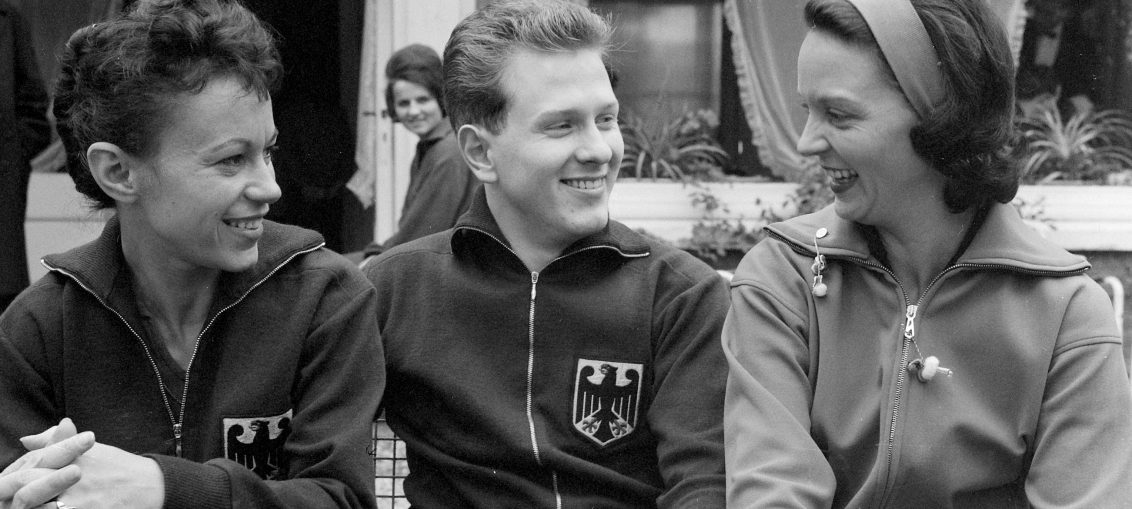
1962, Agnes Simon (left) with Ebby and Di Schöler (Photo: Archive)
by Ian Marshall, Editor
Gold medallist at both the World Championships and European Championships, following a short illness, Agnes Simon passed away on the morning Wednesday 19th August. She was 85 years old.
Born Agnes Almasi in the Hungarian capital city of Budapest on Wednesday 21st June 1935, always known to her friends as Agi, she has the unique distinction of representing three national associations at the very highest level.
At the World Championships, on duty for her native Hungary, alongside Zsuzsa Fantusz, Gizi Farkas and Eva Koczian, she secured women’s team bronze in Bucharest in 1953, before the following year claiming silver in London, when Ilona Kerekes replaced Zsuzsa Fantusz in the line-up.
One step higher, four years later in Stockholm, the city to which Agnes alongside her husband and coach Bela Simon had fled following the 1956 Hungarian Revolution, it was the highest step. She partnered colleague Livia Mossoczy to women’s doubles gold.
Immediately following the conclusion of events at the 1957 World Championships, the couple moved to the Netherlands; notably at the 1959 World Championships, Agnes reached quarter-finals of the women’s singles and partnering Leah Neuberger of the United States, the same round in the women’s doubles.
A short period in the Netherlands, in 1960 they moved to Duisburg in West Germany where she joined DSC (formerly DTC) Kaiserberg, the club with which she became synonymous. She led the club to the German Team Championship 18 times, the German Cup 15 times, in addition to the European Cup in 1966 as well as the Nancy Evans Cup in both 1971 and 1981. She was still active in the Bundesliga when 60 years old!
Internationally, in German colours, she claimed three titles at the European Championships.
In 1968 in Lyon, she secured the women’s team title, lining up alongside Edith Buchholz, Jutta Krüger and Wiebke Hendriksen but her greatest success was six years earlier in 1962 in Berlin. Once again alongside Edith Buchholz but with Inge Harst and Uschi Matthias completing the squad, team gold was gained, before later claiming the top step of the women’s singles podium. Additionally she was the mixed doubles runner up partnering Ebby Schöler, gaining the same women’s doubles finish alongside Inge Harst; the latter, an achievement she was to repeat in 1970 in Moscow when joining forces with Diane Schöler, the player she had beaten in the 1962 women’s singles final.
“She was a great table tennis player and also a great personality. In matches, she fought to win but always in a fair manner. We experienced this as her partner in doubles and mixed doubles, as her team mate and also as an opponent. We will never forget this; her backhand stroke was absolutely unique. She rarely pushed but mainly used a kind of a drive which we have never seen with anybody else. Difficult to return because she had sponge with pimpled rubber on the backhand; she placed the ball always to give the opponent a problem to return, even when she was counter attacking. Her footwork to hit the ball and then move backwards to wait for the return, was remarkable.” Ebby and Diane Schöler
Success on the world and European stage; furthermore, she won the German Open three times in a row: 1960 for the Netherlands, 1961 and 1962 for Germany. Likewise when representing the Netherlands, she won the women’s singles title at the English Open in 1958 and 1960.
Overall between 1962 and 1976 she made 93 international appearances for Germany.
